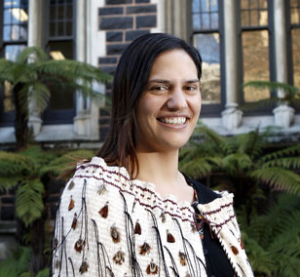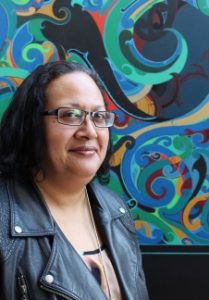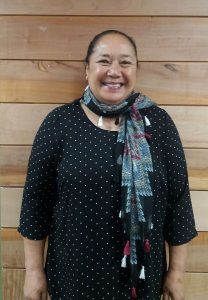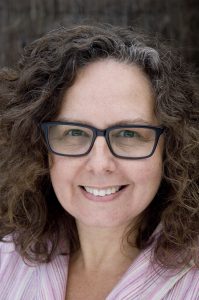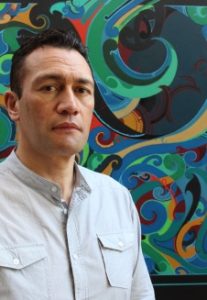2020 Te Tumu Research Round-up
Well, it’s been a weird year for everyone, and the coronavirus certainly made our work harder, with a lot of our energy going into making sure we were able to still offer quality teaching to our students. We have also had a number of staff move on to greener pastures: Jim Williams and Lyn Carter retired; Gianna Leoni left us to take up a research role with Te Hiku (where former colleague Suzanne Duncan also works); Megan Pōtiki has shifted to the Office of Māori Development in the university; and Poia Rewi has taken up the Tumu Whakarae (CEO) position at Te Mātāwai. So we are expecting to see a bunch of fresh faces in the new year.
Research has still carried on. As the Chair of our Research Committee, Michelle Schaaf says, “Despite Covid, the retirement and departure of staff; the research committee’s commitment to building a successful research culture continues and owes its success to the oversight and guidance provided by senior staff directly. The committee continues to monitor staff research activity and promotes staff research through various mediums: research website long running and informative Research Blog.”
We also asked staff to tell us about their research, and what they’ve been up to. Here are their replies.
Karyn Paringatai’s Marsden
Karyn is lead investigator on the Marsden project: E kore au e ngaro! The enduring legacy of whakapapa (awarded $823,000), which looks at the importance of whakapapa in health, in particular to whānau that carry the cancer-causing hereditary mutation in the CDH1 gene.
2020 started with good intentions to advance my Marsden research with a lot of face-to-face engagement sessions planned, but those plans fizzled quickly during the March-April lockdown. But things have picked up during the second half of the year with a lot of gusto. In September I met with Maybelle McLeod, Pauline Harawira and Erin Gardiner from Kimihauora Health and Research Centre in Tauranga to co-develop a research topic for future PhD student, Kahurangi Salu. Pauline and Maybelle were two of the four lead investigators of the research project that discovered the CDH1 gene mutation. A conversation with Pauline went as follows:
Pauline: “My mother was from Hicks Bay.”
Me: “Oh wow.”
Pauline: “Yeah her younger brother, we called him Uncle Boy, his first name was Manuhou. His middle name was Paringatai. He was named after that koroua that died in the war.”
FUN FACT: My whānau are based just over the hill from Hick’s Bay. My daughter is called Manuhou Paringatai. She was named after that same koroua who died in the war, my grandfather’s first cousin. Whakawhanaungatanga – well and truly achieved.
Check out this short video featuring Karyn and the wider project.
This meeting coincided with a wider whānau hui. It was an opportunity to speak to whānau, canvas opinions, make connections, and recruit participants. The concerns they expressed were echoed in my research objectives. As a result I have been involved in developing a post-surgery nutrition research project and a funding proposal for a Kaihautū – someone who will help develop a pre- and post-surgery management care plan that takes in to account Māori realities. Watch this space……
Michelle Schaaf’s research
The Covid pandemic really pushed me to think of what the different ways are, that I could have students demonstrate what they know. There’s been a lot of me letting go of control, to try and build resilient and more-independent students. Teaching remotely also made me look at my own course content with fresh eyes. In terms of my research, I was forced to be adaptable, and implement strategies to mitigate the long-term impact of research disruptions.
new Publications
UORG: “Childhood in a changing Pacific”
Freeman, R.M. Schaff, C. Ergler, M. Kivalu, A. Niusulu, T. Tua’a and H. Tanielu, Childhood in Changing Pacific’ Summary Research Report August 2020, (Summary Research Report), Dunedin: School of Geography, University of Otago.
Childhood in Changing Pacific’ Summary Research Report Presentation and Exhibition. 10 November 2020. This was a report presentation to participants and their families, in Dunedin and Samoa, on campus and via zoom platform. See here for more.
Articles submitted
“Kinship and belonging: Pacific children’s perspectives on the diaspora” to the Childhood Journal.
“Connections to community and culture, a photographic analysis of place attachment amongst Pacific Island children” submitted to Children’s Geographies.
Telesia Kalavite’s latest article
Telesia has recently published an article, “Toungāue cooperative pedagogy for Tongan tertiary students’ success” in the Waikato Journal of Education, 25, 1 (2020). You can read it here.Toungāue cooperative pedagogy
Abstract
Cooperative Pedagogy specific to Tongans can enhance students’ academic success in New Zealand’s tertiary education. Tongan students’ success depends on teachers’ recognition and understanding of Tongan students’ sociocultural context which involves their pule‘anga (bureaucracy), famili/kāinga (family), siasi (church) and fonua (country) relationships. Tongan students should not be treated within the Pacific groupings because ‘Pacific’ is a term of convenience for peoples who originate from different countries in the Pacific region whose cultures are uniquely different from one another. The term ‘Pacific’ tends to make these students live in the shadow of being treated as if they have the same needs in the classroom. The culturally specific needs of Pacific students are obscured by the assumption that they are homogenous. Academics and educational authorities in New Zealand need to recognise the importance of Pacific students’ culturally specific needs in their educational environments to move towards solving the problems of underachievement. This article explores the use of a culturally specific Tongan Toungāue Cooperative Pedagogy for teaching Tongan students in New Zealand tertiary education. Toungāue Cooperative Pedagogy is rooted in Tongan students’ sociocultural context which is at the heart of the Tongan society. More importantly, this proposed Toungāue Cooperative Pedagogy is transferable and could also be beneficial to other Pacific and Indigenous cultures.
Keywords
Toungāue cooperative pedagogy; Tonga tertiary students’ success; Pacific diversity; Pacific ethnic special needs.
Tangiwai Rewi’s projects.
Most of the research related mahi I have been consumed by since 1 July has involved the 0.2 FTE Ngā Pae o Te Māramatanga co-management of the Te Pāpanga Te Reo Māori, Ngā Tikanga Māori (TRMNTM) mahi along with Dr Gianna Leoni with the departure of Professor Poia Rewi. The list includes:
- Running a Te Kōrerorero a Ngā Tumu Whakarae webinar hosted on the last day of Māori Language week 18 September 2020 to encourage eight CEO’s to share their ideas about working together for te reo Māori research under Te Papa Kōrero. The purpose of Te Papa Kōrero is to provide coordination and leadership for the implementation of both Maihi (Maihi Māori and Maihi Karauna) in respect of the Māori language strategy. We managed a 50% success rate by confirming Shane Taurima (Māori Television), Larry Parr (Te Māngai Pāho), Dr Poia Rewi (Te Mātāwai) and Ngahiwi Apanui (Te Taurawhiri) to participate in the session facilitated by Dr Gianna Leoni and myself (from Te Tumu at the University of Otago), in our roles as the NPM Co-Managers of Te Reo & Ngā Tikanga Māori Platform. We aim to invite the other four Chief Executives of Te Puni Kōkiri; the Ministry of Education; the Ministry for Culture and Heritage and the Department of Internal Affairs, who were unavailable on this occasion, to join another webinar at a later date.
- N03 Project Te Reo me ngā Tikanga Māori – Named Scholarship – Professor Wharehuia Milroy; Understanding, articulating and measuring the language shift at the micro-level As part of the Ngā Pae o te Maramatanga Summer Internship Projects 2020-21 we were asked to develop, organise and then manage and supervise this named scholarship to recognise the scholarship and leadership of the late Te Wharehuia Milroy to the revitalisation and normalisation te reo me ngā tikanga Māori. In doing so, the intern will review and develop an understanding of Milroy’s research and scholarship, that is specific to te reo Māori normalisation and excellence. Dr Gianna Leoni will be the NPM Investigator who will work alongside Ria Tomoana (Kaiwhakahaere Rangahau – Te Mātāwai) to supervise the student.
- The third project we have been doing is our Collectivising Ngā Pae o Te Māramatanga Publications which we presented on at the 9th Biennial International Indigenous Ngā Pae o te Maramatanga (NPOTM) conference online 18-20 November. In three phases, the first produced punchy, attention grabbing abstracts summarising the articles.The second attributes keywords to the articles along with word clouds. To ensure accessibility after these two phases, the third phase thematicises the lists so that any person wanting to know what articles are published in each issue can search via content themes. Phase 1 comes to an end this year while phases 2 and 3 will look at completion by end of April 2021.
On a personal research note:
- I continue to push through with my Tuupuna Times research project holding wānanga for whānau and hapū on request, on how to collect stories from their tuupuna.
- My research plan for RSL is a little off beam given the attention to the Ngā Pae o Te Māramatanga workload. However, the next two months will be busy getting that back on track, assisted gratefully by the Te Koronga continued funding support of $5000 development grant this year and recent success with my UORG application He Whakapakari Ake i Te Tuakiri Maaori of $11, 434 which takes effect 1 January 2021.
- I contributed a Māori perspective to a paper, Ko tā te Māori aronga ki te whakamātao kikiri. A Māori perspective on embryo cryopreservation, which is currently being reviewed by the lead author.
- I still have two articles to complete by the start of next year!
That’s it!
What is Michael Reilly doing?
Since 2019 I have off and on been working on a Māori tribal history manuscript. It currently is organised around the chief themes of tribal traditions: creation, culture heroes, the waka migrations, and the stories about the many generations of descendants who settled and populated this new country. The latter extends over a wide range of topics such as rangatiratanga or leadership; mana wāhine, mana tāne or gender relationships; and possibly, the place of emotion words such as whakamā, or shame, and pōuri, or grief. Each chapter is organised around a selection of traditions on the topic from different iwi. Attention is paid to southern traditions where possible. These traditions are normally taken from published sources, often collections of traditions with a limited analysis or explanation of the content of the narratives.
My aim is to provide the cultural context of these stories in order to help the modern reader understand the layers of meaning found within each text. This often involves an immersion in older ethnographic works by the likes of Elsdon Best, Te Rangihīroa and Raymond Firth who put on record information shared with them by generations of Māori scholars. By locating the texts within this ethnographic record, I can better peel back the layers of meaning found in each of the stories. To me, it opens a window upon that ancient world of the ancestors, Te Ao Kōhatu, the Stone World, as Bruce Biggs once described it. This approach resembles the kind of work I have been pursuing for some years, both in Aotearoa and in the wider world of Ancient East Polynesia, notably Mangaia.
Behind this approach lies an influential model: Erich Auerbach’s Mimesis: The Representation of Reality in Western Literature. He began writing it while in exile as a German Jew teaching in Turkey during the Second World War. Each of his chapters selects a passage from an author, from Homer through to Virginia Woolf. He uses each of them to explore ideas about how Western literature has sought to represent the world. His aims differ from mine but some of his methods have encouraged me to try and explore the totality of Māori traditions from its beginnings in time down perhaps as far as the edgy beginnings of modern Aotearoa, ending however, in the early nineteenth century when Māori understandings of their world remained dominant. For it is their story after all I am interested in.
More recently, I have initiated other smaller projects after approaches to provide publications either for edited books or journals. One looks at emotions in Oceania, drawing on selected texts from particular Island societies, including Mangaia and Aotearoa, that illustrate important concepts such as love, shame and grief. I am also interested in comparing the different words used to describe the human organ or centre of emotions, such as ngākau and manawa.
Currently, with the help of a research assistant, Jade Higgan McCaughan, I am examining evidence found in the songs published in the four volumes of Ngā Mōteatea, edited by Apirana Ngata and other scholars. Another project was prompted by plans to celebrate the coming of the London Missionary Society to the Cook Islands. I decided to look at some letters by a 19th century Mangaian church minister, Mamae. In one he describes his experience of a hurricane, while in others he gently criticises the editing of local texts by his colleague, William Wyatt Gill; an interesting case of the native speaking back. We see Mamae as a skilled writer who is actively participating not only in the recording of traditions, but also in how it is presented in published form. These kinds of letters give a window into the work and contributions of an important early scholar and missionary whose name, however, is far less well known that Gill’s, for it is the latter’s name that appears on the title pages of the ethnographic studies these two men collaborated in producing.
All this work takes place in the small intervals of relative calm permitted to me when I am not busy either teaching or discharging the responsibilities of Acting Dean of Te Tumu, a role bequeathed to me by Poia Rewi on his departure for Te Mātāwai in Te Whanganui-a-Tara.
Erica Newman’s exciting new project
Erica is lead investigator in a new fast-start Marsden project beginning in 2021: Journey Home: Descendants of Maori adoptees search for their turangawaewae. Only researchers who have recently completed their PhDs are eligible to apply for a Fast Start Marsden grants.
This research will investigate the ripple effects of the 1955 Adoption Act from which some Māori adoptees grow up not knowing their whakapapa, and look at the journeys that some of their descendants undertake in the search for their tūrangawaewae. Erica’s project has already attracted quite a bit of media attention, on te aka kumara, and waatea news, which is useful for getting the project out there to the descendants who may want to make contact with Erica. There is also a closed Facebook page just started, “Descendants of Māori Adoptees”, a safe space for these descendants to ask questions, share stories and support each other.
Erica was also asked to come on the team of the Marsden-funded project, Te Hau Kāinga: Histories and Legacies of the Māori Home Front, 1939-45, to contribute research on tikanga, whānau and adoption
Erica teaches in some large classes, and says that she found challenging converting on-campus papers to on-line. “This year has been quite draining with covid, and the future is a little unsettling when thinking about teaching, not knowing whether we will (or won’t) go into more lockdowns next semester.” But she is keenly looking forward to getting into her research.
Dr Paerau Warbrick’s goings on
In terms of research this year, I have been beavering away at articles.
Recently I have had an article accepted by the Australia & New Zealand Law & History journal, which will be published later in 2021. It is on Māori and Citizenship. And it takes a look at what this phrase ‘citizenship’ meant for Māori up until the 1950s.
My research is taking on a distinctly historical political flavour, on the heels of my 2019 article in the New Zealand Journal of History about Māori elections in the nineteenth century.
I have finished a chapter for a book edited by Lachy Paterson, myself and Megan Pōtiki on Māori texts, contexts, and their resonances for today. This chapter looked at Hēnare Tomoana, MP for Eastern Māori 1879-1884, and his pivotal role in the fall of George Grey’s Government in 1879.
Recently I submitted an article to the Journal of New Zealand Studies. It looks at the two Māori Election Petitions that try to unseat the MPs Karaitiana Takamoana (Eastern Māori) in 1876 and Hone Mohi Tāwhai (Northern Māori) in 1879. In order to understand these petitions, you really have to come to grips with the complex wider political machinations of the Fox, Vogel and Donald McLean political blocs, and the George Grey and John Hall group of MPs in Parliament.
Currently, I am working on an article for the Journal of Polynesian Society on the monumental election battles between Wi Pere and James Carroll over the Eastern Māori seat between 1884-1890. It is an attempt at historical psephology where I use fragmented polling booth data to uncover complexities in the Māori communities in the Eastern Māori election. I am looking at submitting this to the journal by mid-December 2020 or more realistically late January 2021.
This past year has definitely been a challenge for everyone. I wish everyone a safe and reflective Christmas and New Years. Mauri ora koutou.
Lachy Paterson’s doings
Lachy is lead investigator, with Angela Wanhalla (History) on the Marsden-funded project: Te Hau Kāinga: Histories and Legacies of the Māori Home Front, 1939-45, looking at what life was like for Māori in New Zealand during the Second World War, and how these experiences shaped Māori society in the years following the war. He is currently on RSL.
This project incorporates a large team. Alongside Angela Wanhalla and I, we have Erica Newman (as discussed above) as research associate, and five research assistants (one of whom is based in Wellington, and another in Auckland). We’ve also two excellent student researchers, Hannah Barlow and Stacey Fraser, both history post-graduates with research aligning with our project. It’s also been wonderful to be able to fund Māori summer scholarship students, with three who undertook projects last summer. Due to the travel restrictions, we have been unable to go to several overseas conferences, so redirected some of those funds into more summer scholarships. This summer we have six young Māori students (two partially funded through the Humanities Māori Summer Bursaries) who have just started their projects.
A key tool for our project is the Te Hau Kāinga website, which is fully bilingual. The site features a Stories page where we are posting research as we go along. It’s a bit eclectic, but definitely worth a read. The stories are also circulated to Facebook pages: our own FB page @maorihiomefront, the NZ History Teachers page, and the Māori-language versions onto the Te Mana o te Reo Maori page.
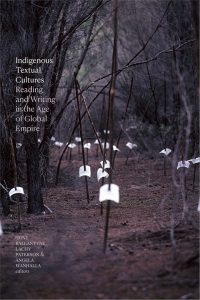 I have been fortunate to see a couple of publications appear this year. Indigenous Textual Cultures: Reading and Writing in the Age of Global Empire was recently published with Duke University Press, 2020. This project came out of a 2014 symposium in Dunedin featuring a number of eminent international scholars, and Tony Ballanyne, Angela Wanhalla and I co-edited the collection of essays that came out of the symposium.
I have been fortunate to see a couple of publications appear this year. Indigenous Textual Cultures: Reading and Writing in the Age of Global Empire was recently published with Duke University Press, 2020. This project came out of a 2014 symposium in Dunedin featuring a number of eminent international scholars, and Tony Ballanyne, Angela Wanhalla and I co-edited the collection of essays that came out of the symposium.
Sometimes things take time. I attended a symposium on colonial newspapers at Yale University in 2017, looking at the notion of Habermas’s “public sphere” within colonial societies, presenting on Wellington Māori letters in Te Karere o Poneke in the 1850s. This was recently published as “Te Karere o Poneke: Creating an Indigenous Discursive Space?” in “Special Issue: Colonial Public Spheres and the Worlds of Print”, Itinerario: Journal of Imperial and Global Interactions,44, 2 (2020) edited by Emma Hunter and Leslie James.
My argument is that if you used the conditions of the Habermasian model of a public sphere (a rather Eurocentric theory) it was difficult to apply to Māori of the Wellington period in the 1850s. They were not urban, bourgeois, or anti-clerical, nor in control of the media. But the impact of colonialism nevertheless gave them new ways of looking at the world, and that this newspaper gave plenty of scope for them to articulate them.
I have also submitted a chapter, “Race and Revolution: Haiti and the Kīngitanga, 1863” for a new book, edited by Lyndall Ryan and Angela Wanhalla, on Aftermaths: Remembering Colonial Violence in New Zealand, Australia and the Pacific. This should appear with Otago University Press in 2021. I was also asked to contribute a case study for the planned Edinburgh Companion to British Colonial Periodicals, and have written (but not yet submitted) a piece entitled, “Making Māori citizens in Colonial New Zealand: the Role of Government Niupepa.” I anticipate this coming out in 2022 with Edinburgh University Press.
Another project is to write a book on Māori print culture, from the first book in 1815 through to the present. I have pretty much written a draft, but this needs some extra work and refinement. And as Paerau mentioned above, he, Megan Pōtiki and I have a planned edited collection on Māori-language texts that we plan to get on to when we have a spare breath.

